Successful
protest without effect
Sao Paulo do
Brazil, March 29, 1998
- Confusion
- How
did the Ferrari perform?
- A
3rd and an 8th position
- At
least four F300s in existence
The coverage of the 1998 Brazilian
Grand Prix by the international press was
dominated by news related to the protest against
the revolutionary braking system used by
McLaren-Mercedes, which had been described
adequately by German journalists as a "Wunderbremse"
(= "Prodigious Brake") and that caused
quite a confusion when it came to the question of
whether or not it was legal to use it in a
Formula 1-car.
Nevertheless, the weekend became a
pure McLaren-Mercedes show: Mika Häkkinen was
fastest in each of the three (!) qualifying
sessions, gained the pole by setting a lap time
of 1:17,092 and did eventually win the race in
superior style, followed by teammate David
Coulthard who came in on 2nd position.
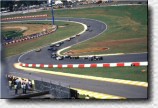
Although the successful protest did
not gain the effect expected by Ferrari since the
McLaren proved to be the superior car even
without its revolutionary brake, the people from
Maranello may well feel satisfied with the
results achieved by their team: The new engines,
designated as type 47d, did stand the race
without any problems. On Saturday, Michael
Schumacher set a lap time of 1:18,449 in the
qualifying. For a long time, it did look like if
he would be the third on the grid on Sunday, but
just a few seconds prior to the end of the
session, Heinz-Harald Frentzen set a slightly
faster time in his Williams, pushing Schumacher
to fourth on the grid.
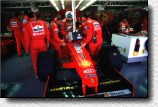
Schumacher's
start on Sunday was not that satisfactory since
he was passed by teammate Eddie Irvine and
Benetton's Alexander Wurz. Later on, he made it
to fifth position behind the two McLarens, Wurz
and Frentzen.
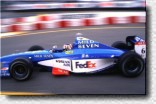
When the race was over
after 72 laps, the German was the lucky third,
behind Häkkinen and Coulthard. His second
pitstop had earned him this position although it
had definitely not been a quick stop: it actually
took 13,6 very long seconds after the two-times
world champion had stalled the engine.
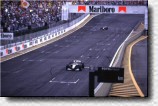 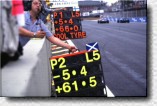 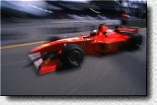
Unfortunately,
Eddie Irvine was not able to keep up with the
excellent performance of his teammate. He
eventually came in on 8th position just behind
Jacques Villeneuve.

Likewise as in Australia, Schumacher
drove F300 s/n 184 while Irvine was sitting in
s/n 185. The latter could be seen in a race for
the first time.
Up
to now, at least four F300s are likely to have
been constructed: serial numbers 181, 183, 184
and 185, which were already seen as race cars,
T-cars or spare chassis. And it is somehow not
very likely that s/n 182 is unused in this
sequence. gs
-
1. Häkkinen, 2.
Coulthard, 3. Schumacher, 4. Wurz, 5. Frentzen 6.
Fisichella, 7. Villeneuve, 8. Irvine
|